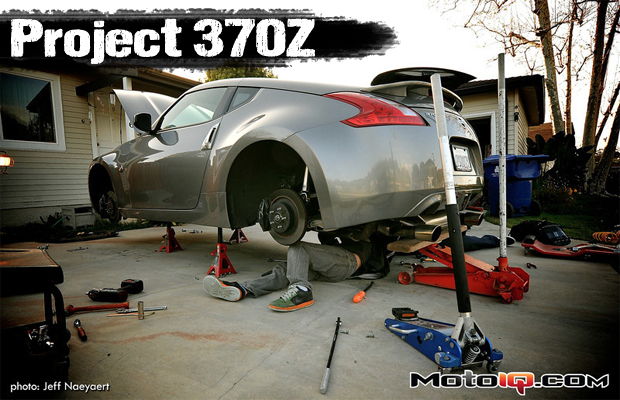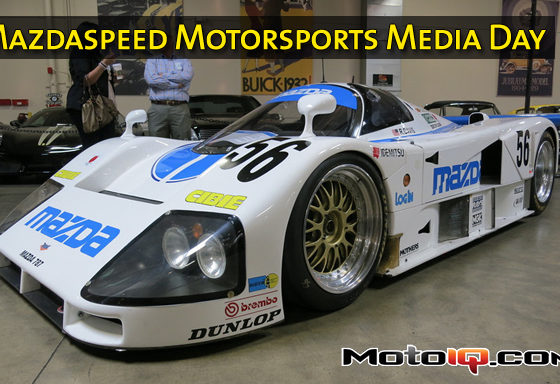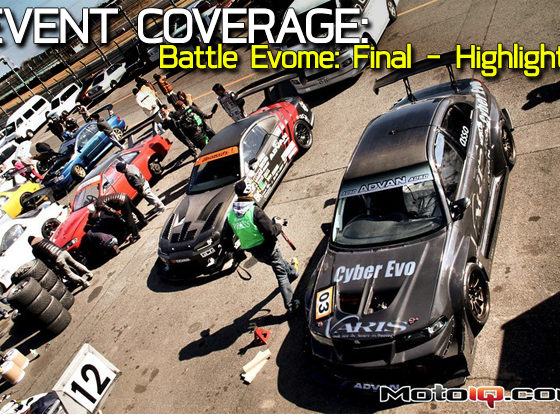,
 |
| The rear shock has a shorter body, an MCU bumpstop and a larger shock shaft than stock. |
The KW V3’s rebound adjustment primarily affects the low speed damping–shock piston velocities in the 0-2″ per second range. Low speed damping adjustment affects body motions such as roll and pitch. This is in the area of the damping curve that the driver feels the most when driving fast as it affects roll and transient response. Low speed damping has the biggest effect on vehicle dynamics since it affects gross body motion.
The V3 has the main shaft and piston riding in the inner tube of the shock body with the rebound damping adjuster built into the low speed circuit. A threaded tapered rod that goes to an adjusting knob at the top of the shaft controls the cross sectional area and hence the flow of the low speed damping orifice. The knob is adjusted with an allen wrench.
 |
| The low speed rebound damping is controlled mostly by fluid flow through the piston on the end of the shock rod. Turning the rebound adjusting knob located on the top of the shaft screws the tapered metering rod up and down varying the size of the orifice. The low speed fluid flow is represented by the green arrows. At higher shaft speeds the mid and high speed circuit kicks in, the high speed fluid flow is shown by the blue arrows. The hydraulic pressure deflects the metering disc shown in yellow for mid speed damping and higher velocities allow the spring loaded blow off of the disc to open. |
Screwing the adjuster in and out raises and lowers the tapered end of the rod into the orifice which changes the amount of fluid that can flow through it. When the orifice is mostly blocked by the screwed down taper, little oil can flow and there is a lot of low speed damping. When the taper is higher and the orifice is open, the fluid can flow freely and the damping is decreased.
The piston also has an innovative two-stage system combining a deflected disc valve system and a spring loaded blow off valve for controlling the rest of the velocity range. Deflected disc valving is very common with monotube shocks and is good for low speed control. The unique spring loaded rebound blow off helps give the shock a lot of sensitivity in the transition from low to high speed damping. This valve is one of the secrets for the KW’s smooth ride with good control.
 |
| In rebound, the shock’s foot valve located on the bottom of the shock, simply acts like a one way check valve allowing fluid displaced by the shock shaft to flow into the outer tube . The compression adjuster increases the spring preload on the compression blow off valve which is the yellow needle valve shown here. On compression the fluid flows through the adjustment orifice and the damping force is again controlled by the unique combination of deflected disc valves with a spring loaded blowoff function. The combination of deflected disc and spring loaded blow off give KW’s their unique range of control with frequency sensitivity. This helps the shocks produce both firm control and a smooth non tire shocking ride. |
The compression damping adjustment is controlled by the foot valve. The foot valve lives on the bottom of the inner tube and regulates the flow of fluid between the inner and outer tubes. A spring loaded needle valve controls the size of the low speed compression damping orifice located in the foot valve as well as the valve spring preload. The needle valve is adjusted via a thumb knob on the bottom of the shock body. Like the rebound, the compression adjuster also mostly influences low speed compression damping, which like rebound is the part of the damping curve that influences body motion.
 |
| Here is the force velocity curve for digressive valving. When tuned properly, digressive valving can really control body motion while maintaining a decent ride quality. |




7 comments
Hi Mike and friends,
Great write up on the 370z. I have a 2013 G37s coupe, and am thinking that these KW V3’s are just what I have been looking for, as I don’t want to drop my car much more than an inch. Will I be needing that front A arm to dial in my camber to stock specs, as well as the rear arms? I’m most likely not going to track my car, but who knows,,a guy has to have some fun! I was giving the Bilstein B16 PSS10 kit consideration, but Bilstein said the minimum drop in front was about 2 inches, which might be too low for a street car. How did you access the upper adjusters on the V3’s?
Thanks,
Michael
For an adjustable front arm, I prefer the part made by SPL which was not available when we did this car. If you are not going to track the car, I don’t think its particularly needed. Its good to pick up some negative camber you will get from lowering the car unless maximum tire wear with less performance is important to you. I prefer the KW over the Bilstiens because of their adjustment flexibility.
Hi Mike,
Thanks for the reply. Those SPL upper arms are indeed beautiful, but I think they might be overkill for a mostly street driven car. What do you think about the SPC arms, or the Z1? I pretty much nixed the Bilsteins after going around with their tech dept. I really don’t want to drop the car all that much, and they were telling me minimum drop was about 2 inches! I’m pretty sure that I am going to go with KW. Hopefully it won’t be too much trouble dialing in the back, as the upper adjustments seem like they will be very hard to reach,, unless I drill an access hole, and buy an extender knob. I also work on the ground under stands most of the time, and as I age, it doesn’t get easier, but I still enjoy it. Cheers,, Michael
I think you probably don’t need arms for a street car and can just live with the additional negative camber which helps performance.
We drilled holes and used a long 3mm allen wrench but not KW makes optional extended adjusters so I would do that.
Hi Mike,
Did you ever install a set of SPL front upper arms or any other of their products on the 370Z? If so, how much noise and vibration transfers into the car? Do the PTFE lined rod ends last very long? I see on the SPL site that they are “For off road only”. Did you ever lower the Z more than an inch? Did the Kinetic parts with urethane bushings make alot of noise, and what about longevity? I am very much into handling, and ride quality, or I would not be looking at any of this stuff. Tire wear is a consideration, as good tires aren’t cheap. How do you compare the ride feel of the Z on the KW’s to the stock suspension? At a 1 inch drop, did alignment stay in or close to spec?
Thanks, Michael
We didn’t on the 370Z but we have on our Project 350Z and R35 GT-R. It does transfer more noise and vibration into the cabin and if you are concerned about this I don’t recommend it. The Kinetic stuff isn’t that noisy or harsh but for us, you could not get enough negative camber out of the adjustment. The KW’s ride very well, probably better than stock. Any time you do suspension work, you need to realign the car. A 1″ drop isnt very much so the alignment will come back.
Hello Mike and friends, thank you for these great write ups! Wondering if you were able to find the ideal height measurement on this car? (Hub – Fender)